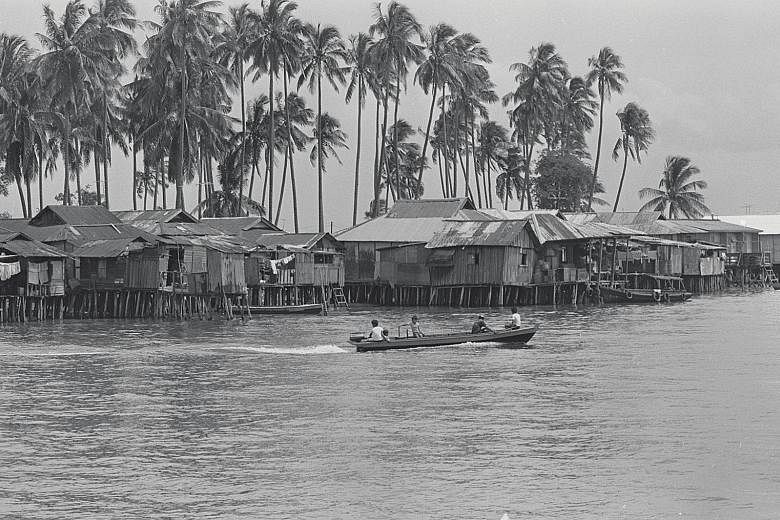Like a scene from a promotional video for an idyllic tropical paradise, men are strumming their guitars on blue wooden benches as palm trees tower over the merrymakers in the background.
Children bob in the water, swimming languidly in between kampung houses perched on sea-drenched stilts and their attached wooden boats.
The shots were actually taken on Pulau Seking, an island off Singapore's south coast, captured in an old video called The Last Island Kampung: Pulau Seking on YouTube. Its last islanders were relocated in 1994 to make way for a landfill operation.
Some have bemoaned the loss of Pulau Seking's village life. The island is believed to have roots dating back beyond 1819 with cultural anthropologists saying its villagers were the descendants of the original Orang Selat who would have known Sir Stamford Raffles.
The size of about 10 football fields, it was Singapore's second last offshore village with 44 kampung houses and no roads and cars.
The only offshore village today can be found on Pulau Ubin.
Although few traces of it are left today, island life formed a key part of the Singaporean identity, noted heritage blogger Jerome Lim, a naval architect, who shared his research with The Straits Times.
For instance, a census in 1980 indicated that nine islands were inhabited with a total population of 4,781 people - with the largest populations in Pulau Ubin and Pulau Tekong Besar.
Based on historical maps dating back to 1846, researchers from the National University of Singapore's Departments of Chinese Studies and Geography counted at least 220 kampungs across mainland Singapore and its isles.
Other interesting stories about island life abound, said Mr Lim.
For instance, although Singapore's three north-west islands were primarily uninhabited, one of them, Pulau Sarimbun, was once home to a lone bungalow. It was the retirement home of a Boer War veteran turned planter, tin miner and waterworks engineer - Mr W. A. Bates Goodall - from 1932 to 1941, said Mr Lim.
Over time, people living on Singapore's islands were evicted as the country's building drive kicked into full gear.
For example, Singapore's Southwest islands, now the site of petrochemical industries, were home to kampungs such as Ayer Chawan and Ayer Merbau, which once had their own cemeteries. Mr Lim noted that they were redeveloped without doing any archaeological studies.
Meanwhile, islands such as Tekong, as well as Pulau Sudong, Pawai and Senang, are used by the military for training exercises and for live firing.


